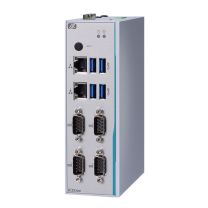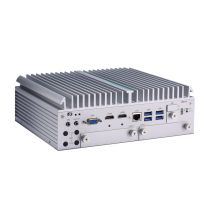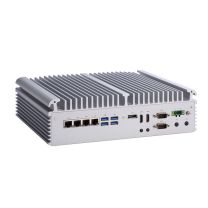
Fanless computers operate without conventional cooling fans, the two principal types of cooling in computers are Active and Passive, and the industrial and commercial applications of fanless computers.
To maintain steady operation, fanless computers leverage heat sinks and convection cooling to manage thermal dissipation. This method allows for more efficient operation and a low failure rate, making it particularly beneficial in dusty or harsh environments which require such as vehicle cabins or harsh and in extreme environments where traditional cooling systems may falter.
Shop By
Shopping Options
- NVR-EMB-nROK7271/4PoEFanless embedded PC for transportation applications (i5, 8x PoE)ETA 2 - 4 Weeks.
-
- NVR-EMB-EN01Fanless embedded PC for Industrial, IoT applications, PoE Powered (Atom)ETA 2 - 4 Weeks.
-
- NVR-EMB-PE200U/2PoEFanless embedded PC for Industrial, IoT applications (i3, 2x PoE)ETA 4 - 6 Weeks.
- NVR-EMB-UT510/8PoEFanless embedded PC for Industrial, IoT applications (i5, 8x PoE)ETA 2 - 4 Weeks.
- NVR-EMB-eBOX671/4PoEFanless embedded PC for Industrial, mobile and IoT applications (i5, 4x PoE)ETA 2 - 4 Weeks.










